Research in attosecond physics
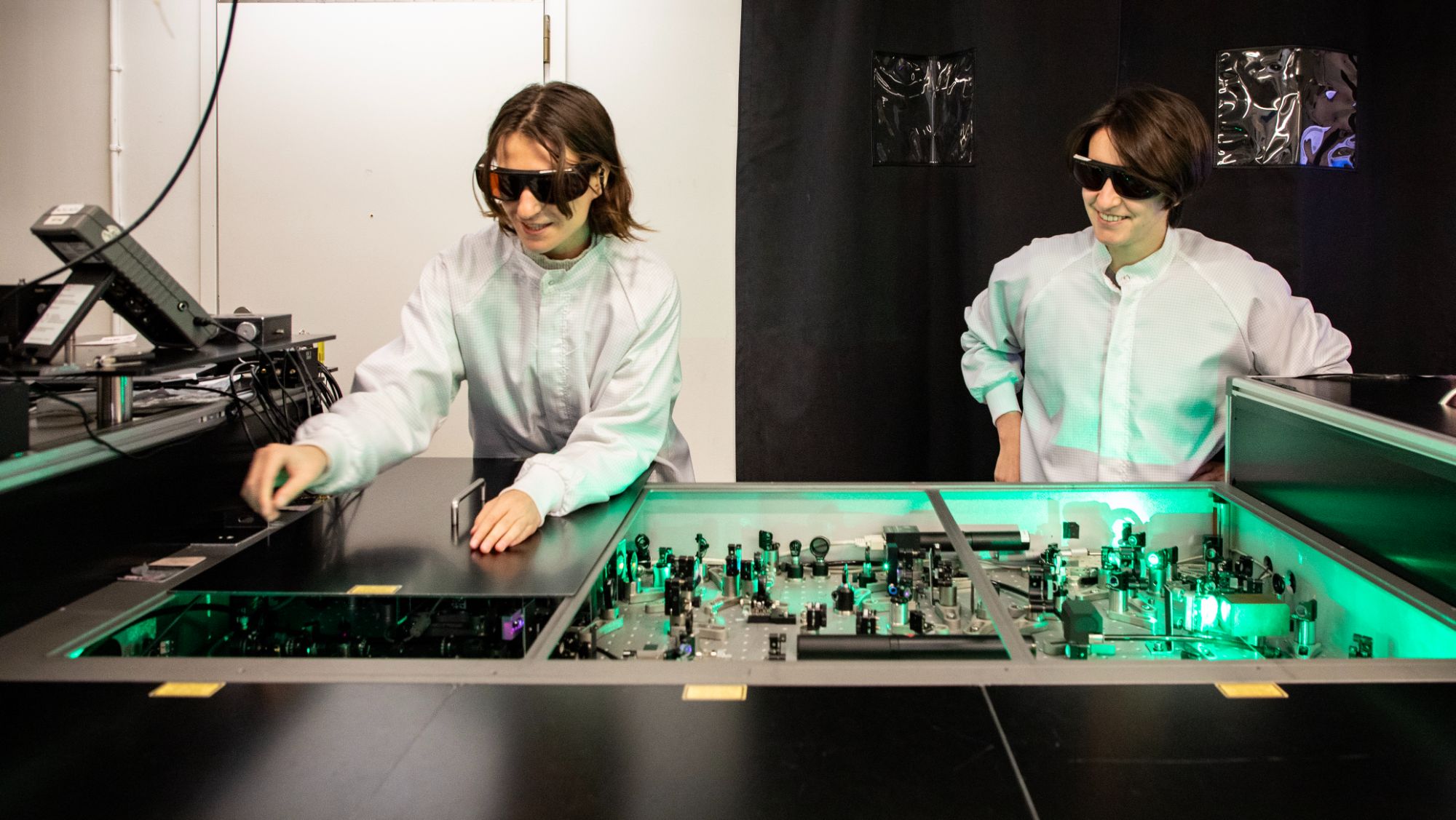
Nedjma Ouahioune and Ann-Kathrin Raab, who are both doctoral students, demonstrate how the facility’s smallest laser system works. The laser used in the largest of the systems is infrared and, therefore, invisible to the naked eye. The smallest system is the only one with visible laser pulses.
Professor Per Eng-Johnsson beside one of the research group’s three systems ‒ the middle one in terms of size. He describes it as “just right”, or that perfect Swedish word, “lagom”.
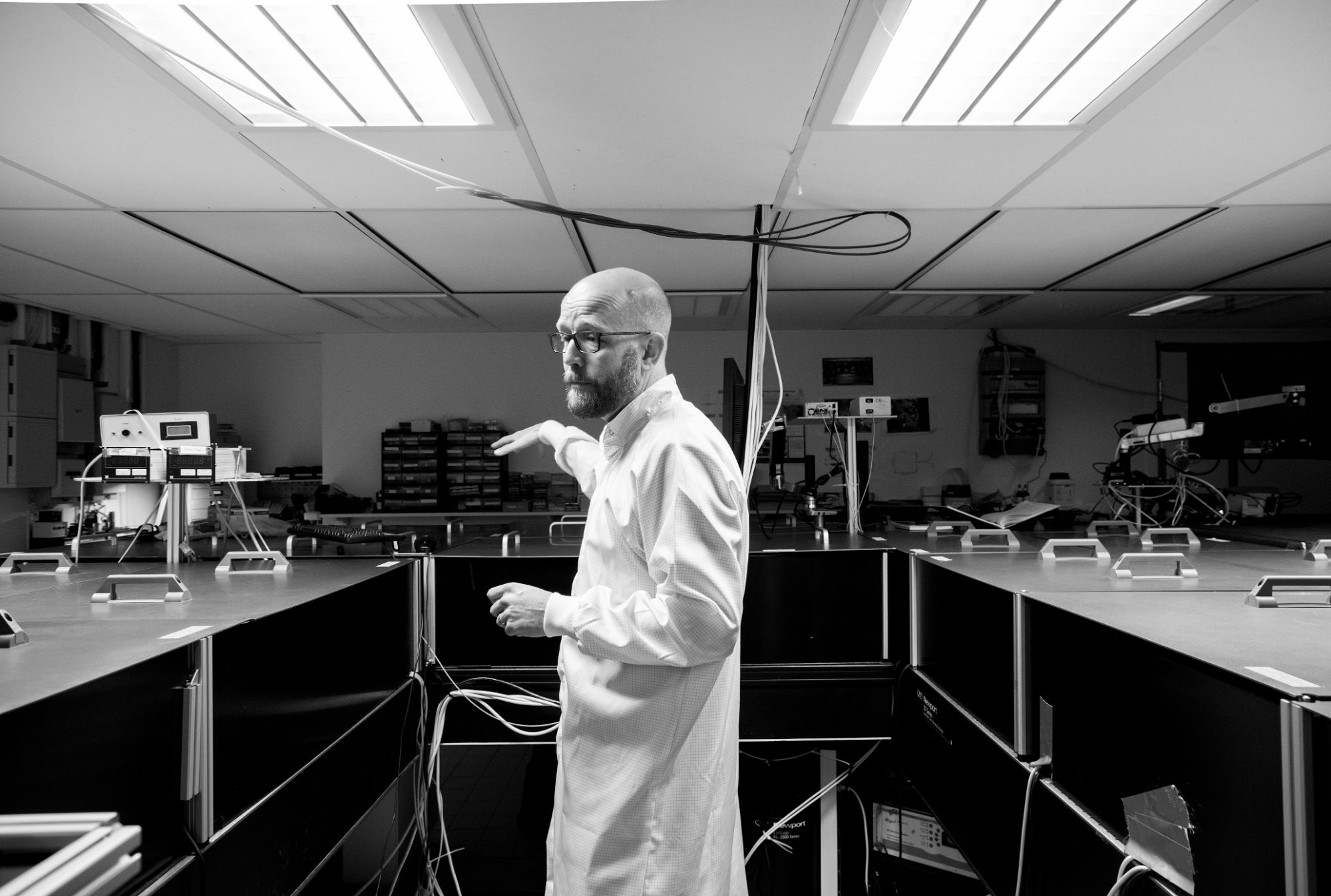
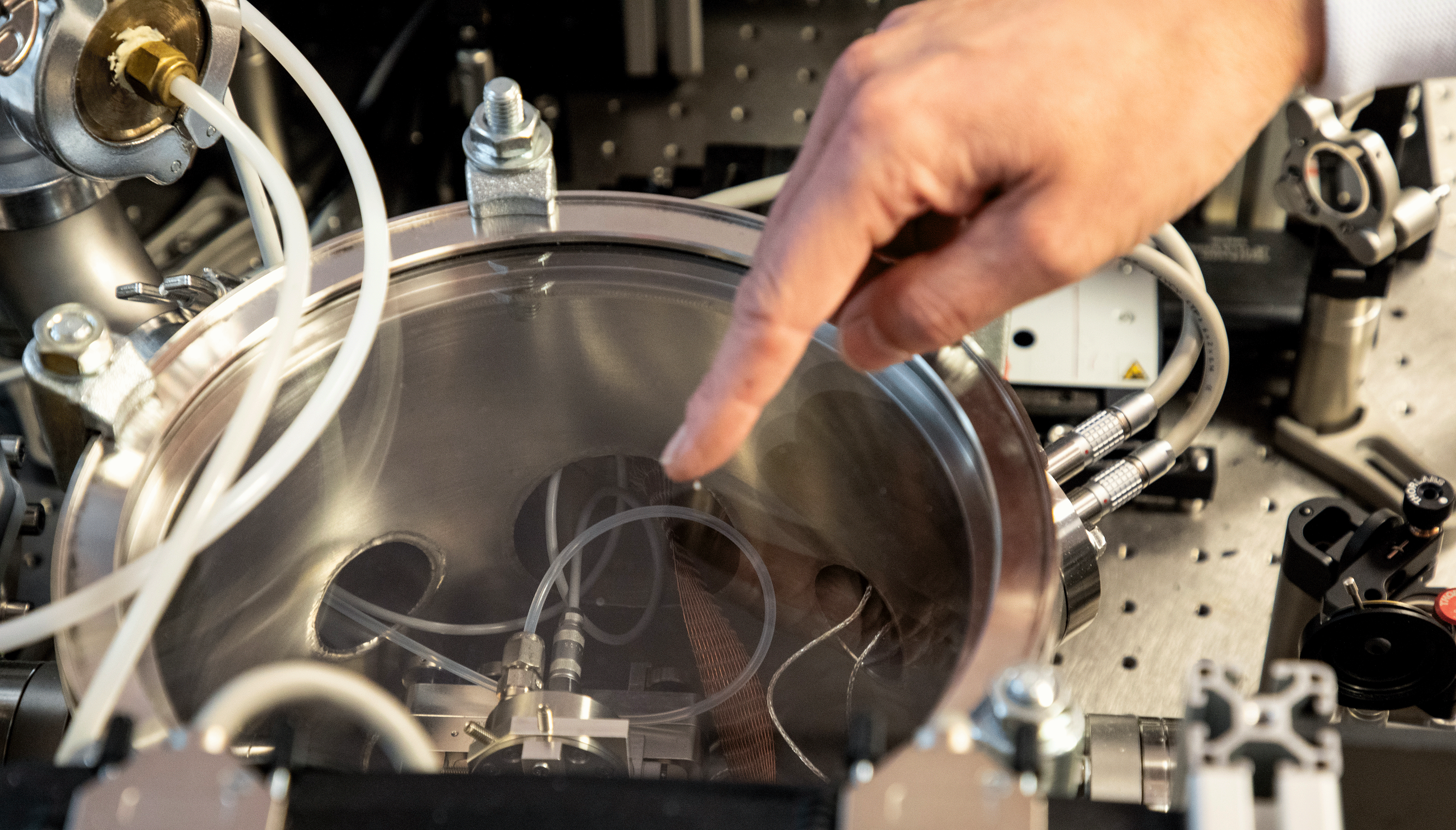
This is the centre of the action – the source of the attoseconds. The attosecond pulses are created in the round vacuum chamber.
Attosecond experiments are sensitive to dust and vibration. The experiments do not have to be conducted in a clean room, but the systems must be housed in a protected, clean, quiet and shielded location. At the same time, some of the surrounding equipment is very noisy and, therefore, is placed in a neighbouring room.
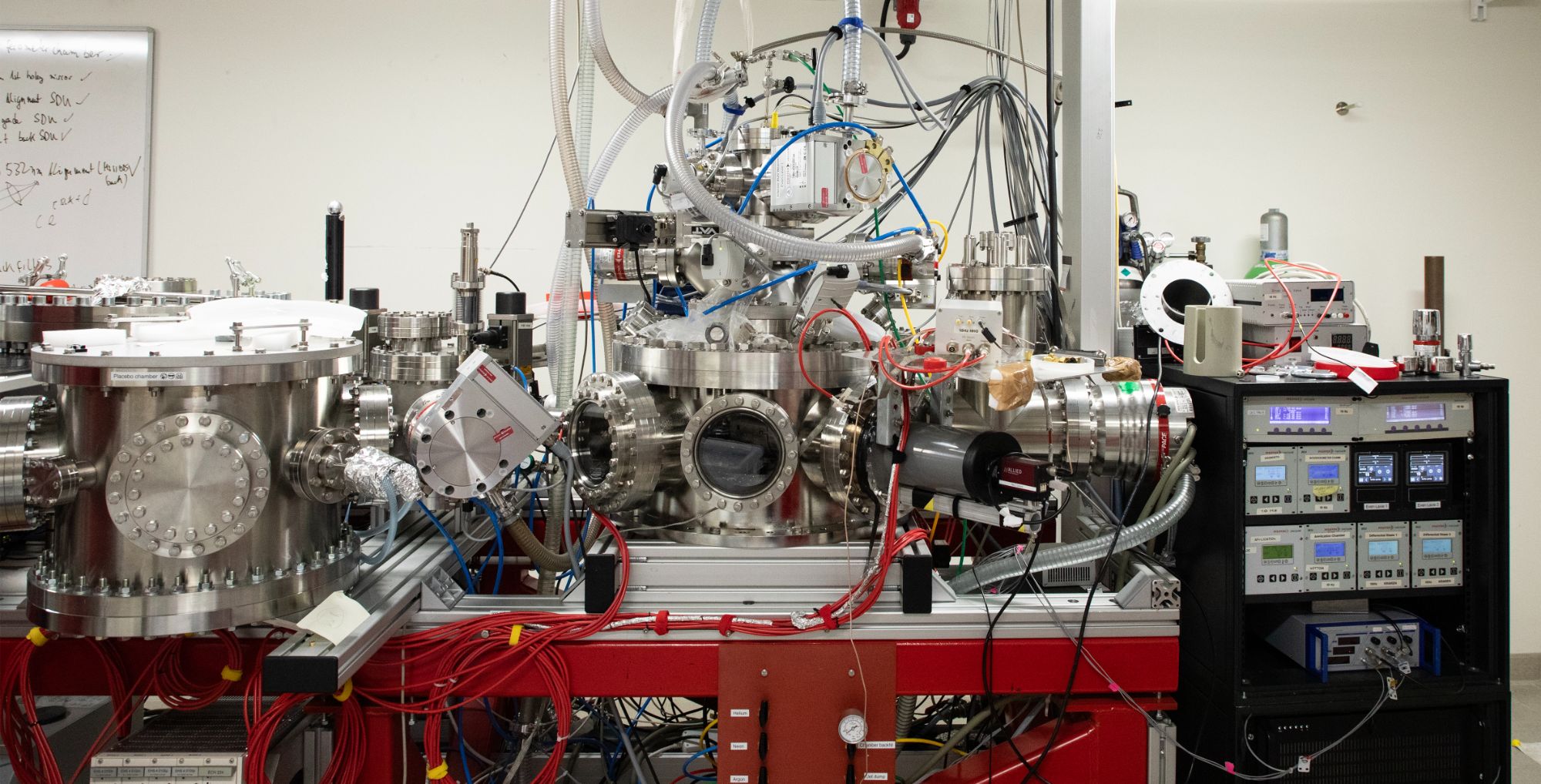
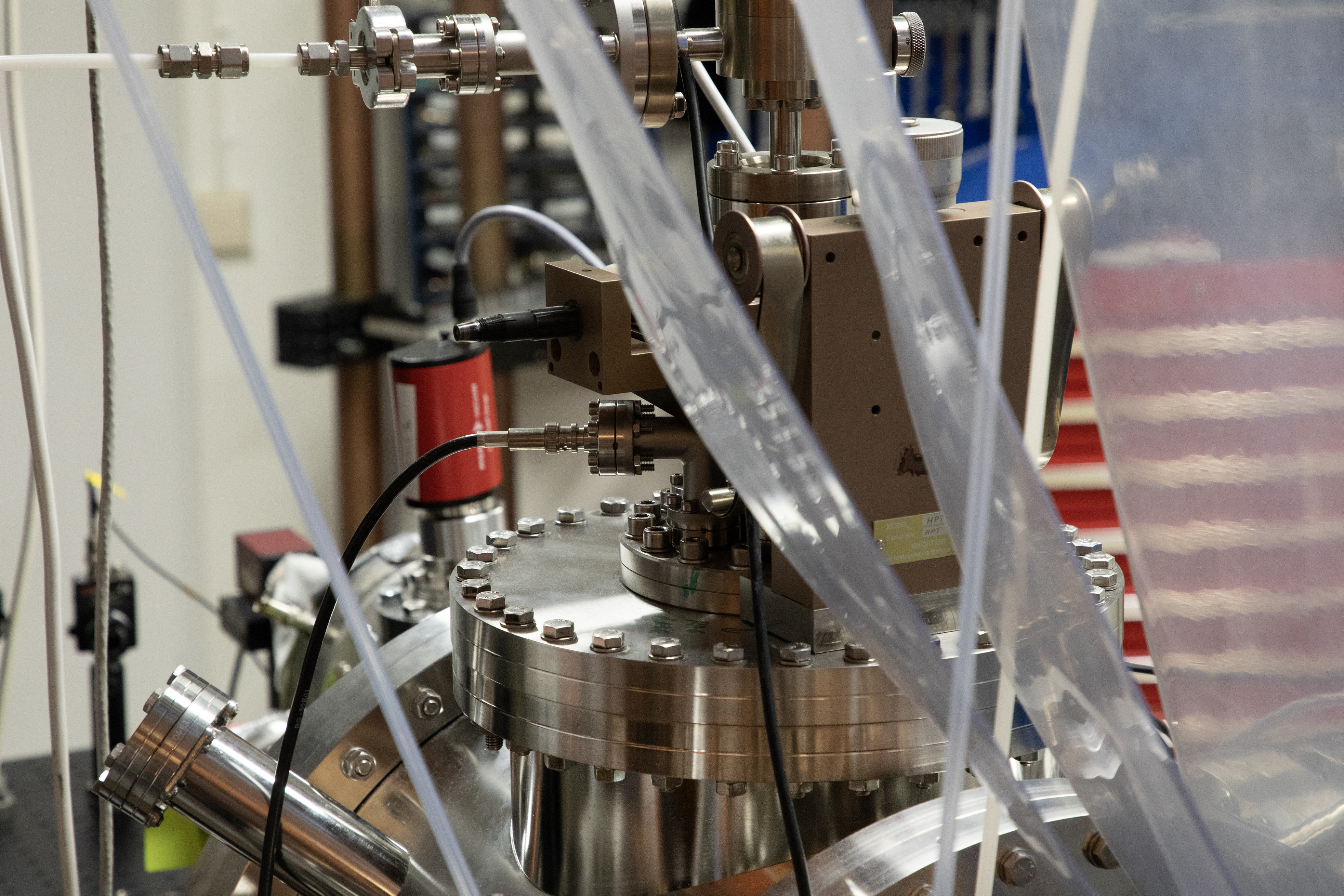
The experiment is conducted in the vacuum chamber, in this case, a magnetic bottle spectrometer. The attosecond pulses meet gas particles in the centre. Electrons are collected using magnetic fields, and their energy is measured.
In this vacuum chamber, attosecond pulses are combined with measurement pulses. The time interval between pulses can be adjusted at this point.
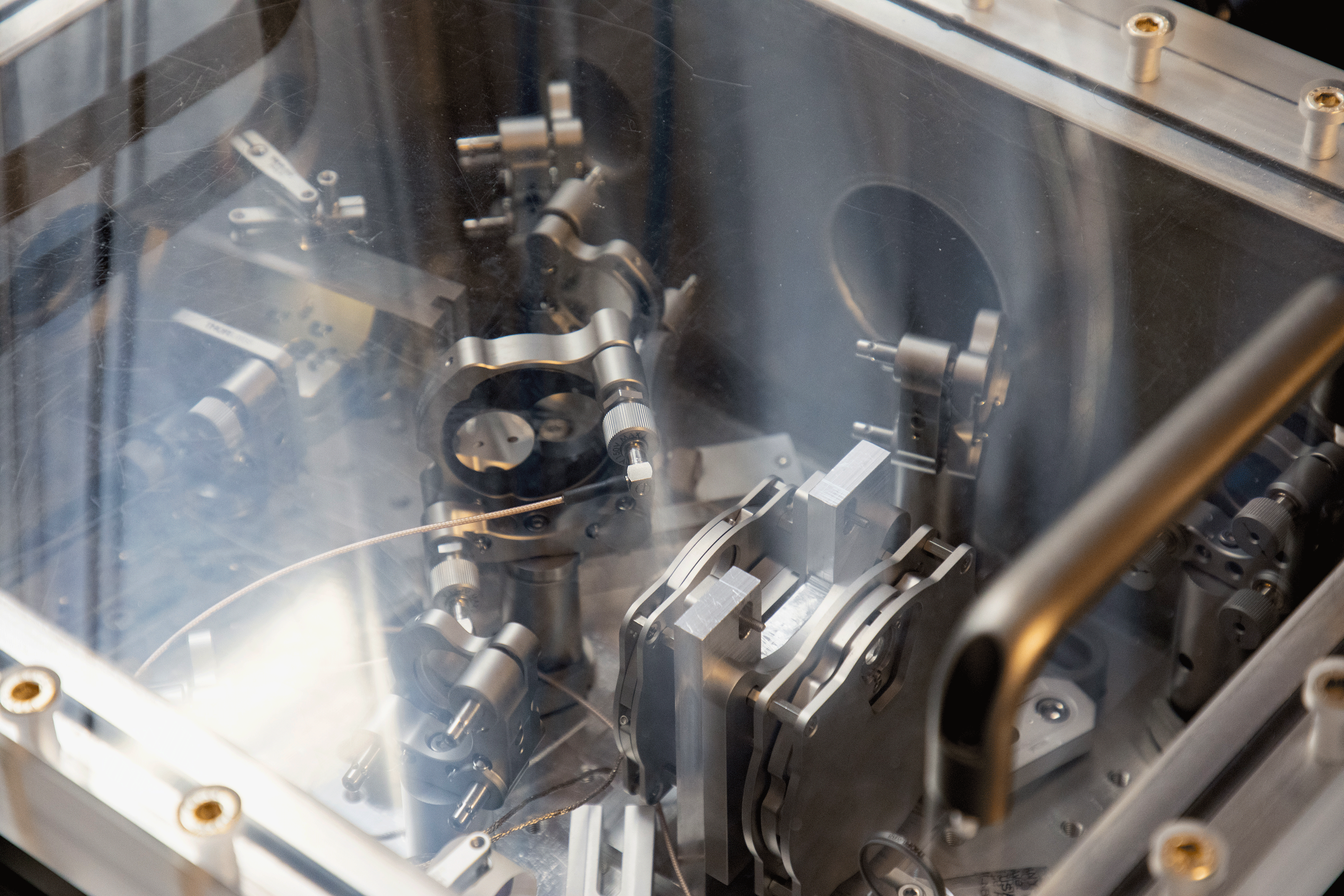
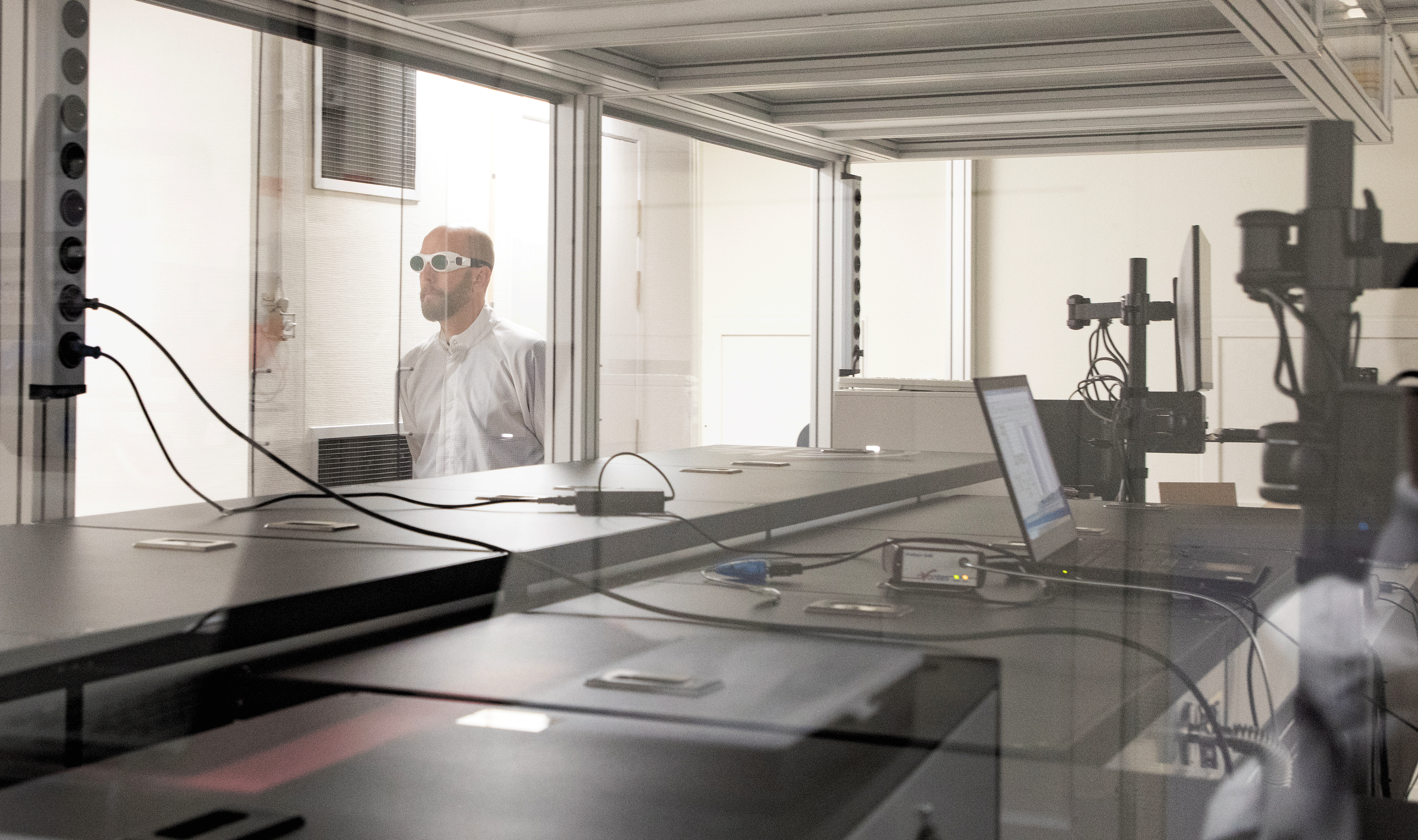
The new terawatt laser system was ordered almost three years ago. It will soon be inaugurated. “It was like buying something that didn’t exist yet. It was not a simple procurement process,” says Per Eng-Johnsson. Fysicum’s three attosecond setups operate on the same basic principles but look very different. The smallest is a few metres long, the largest 16 metres.

Nedjma Ouahioune and Ann-Kathrin Raab, who are both doctoral students, demonstrate how the facility’s smallest laser system works. The laser used in the largest of the systems is infrared and, therefore, invisible to the naked eye. The smallest system is the only one with visible laser pulses.

Professor Per Eng-Johnsson beside one of the research group’s three systems ‒ the middle one in terms of size. He describes it as “just right”, or that perfect Swedish word, “lagom”.

This is the centre of the action – the source of the attoseconds. The attosecond pulses are created in the round vacuum chamber.

Attosecond experiments are sensitive to dust and vibration. The experiments do not have to be conducted in a clean room, but the systems must be housed in a protected, clean, quiet and shielded location. At the same time, some of the surrounding equipment is very noisy and, therefore, is placed in a neighbouring room.

The experiment is conducted in the vacuum chamber, in this case, a magnetic bottle spectrometer. The attosecond pulses meet gas particles in the centre. Electrons are collected using magnetic fields, and their energy is measured.

In this vacuum chamber, attosecond pulses are combined with measurement pulses. The time interval between pulses can be adjusted at this point.

The new terawatt laser system was ordered almost three years ago. It will soon be inaugurated. “It was like buying something that didn’t exist yet. It was not a simple procurement process,” says Per Eng-Johnsson. Fysicum’s three attosecond setups operate on the same basic principles but look very different. The smallest is a few metres long, the largest 16 metres.
